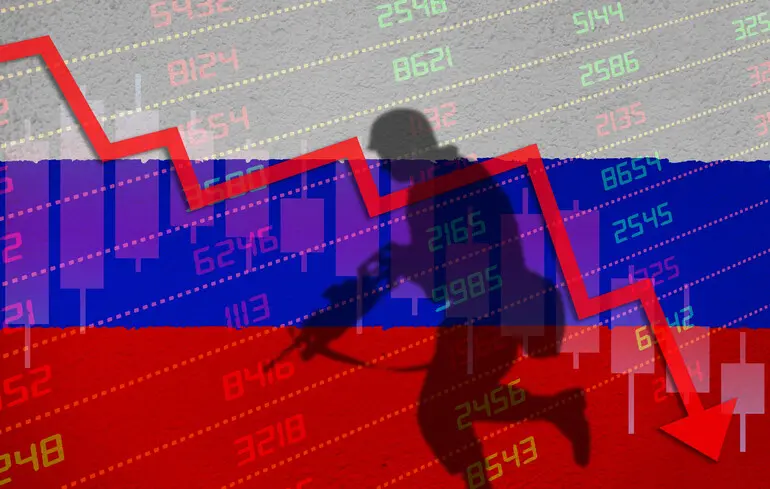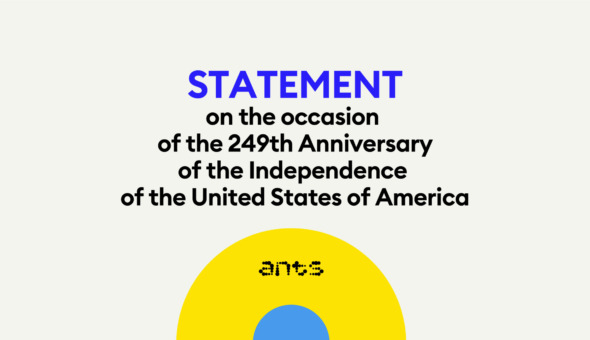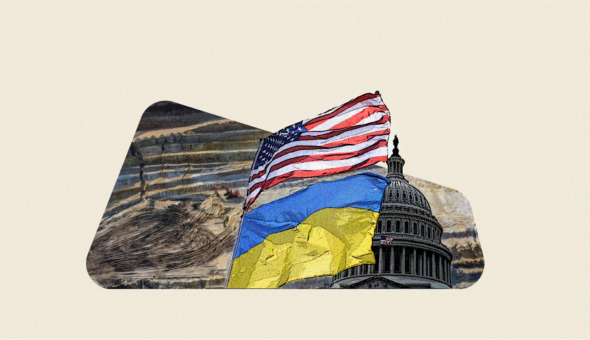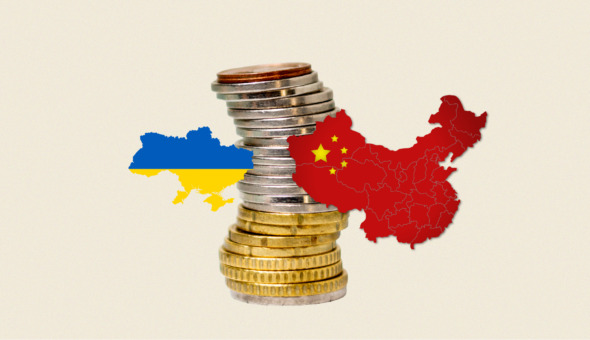
When talking about the state of the russian economy, it is very easy to fall into extremes, sometimes expecting it to collapse “in two or three weeks,” and sometimes believing in the infinity of moscow’s resources. The reality, as always, is much more complicated. The russian economy is not on the verge of collapse, but it has entered a phase of systemic degradation, where each new month of war requires increasingly desperate measures to find resources.
Macro level: the black hole of the federal budget
The financing of the russian federation’s armed aggression rests on three main pillars: the National Welfare Fund (NWF), revenues from energy exports, and the central bank’s emission tool, i.e. the printing press. However, by the fourth year of the full-scale invasion, each of these pillars is already beginning to “sag.”
According to the Stockholm International Peace Research Institute (SIPRI), russia’s military spending in 2024 increased by 38% and has already reached approximately 7.1% of GDP. Against this backdrop, a combination of other unfavorable factors is also forming.
The National Welfare Fund. The once powerful financial safety cushion is rapidly depleting. If at the beginning of 2022 its liquid assets amounted to $148 billion, then, according to the latest data, this amount has now decreased to $36 billion, and during 2025 the NWF may be almost completely exhausted.
Oil and gas revenues. Although russia has partially adapted to sanctions, revenues from energy exports already look insufficient to cover military spending. The average price of the main russian oil grade, Urals, in 2024 remained below $70. per barrel, and constant attacks on oil infrastructure and increased control over the G7 price ceiling limited profits even more.
Emission. Continued use of the printing press in an overheated economy will inevitably lead to dangerous inflation.
Overall, a comparison of the first quarters of 2024 and 2025 is indicative of the state of the russian economy: with military spending increasing by 57%, the federal budget deficit has soared by 623%. These are not just alarming figures, they are a sign that the system is working at the limit of its capabilities.
Micro level: cracks in the foundation – regional budgets
The problems of the federal center are cascading down to the regions, where the financial crisis is even more acute. While the federal budget is trying to patch up the holes, regional coffers are emptying at an alarming rate.
In Yekaterinburg, one of the largest cities in the country, the budget deficit has tripled, reaching 9.7 billion rubles. In Chelyabinsk Oblast, an important industrial center, the deficit has reached 72 billion rubles, which is 25% of all revenues. In fact, the regional budget is short of every fourth ruble. The situation is similar in the national republics: the budget deficit in Bashkortostan has doubled, and in Tatarstan it has grown 2.4 times. Even in wealthy Kazan, the budget, which was planned as deficit-free, now has a hole of 9 billion rubles.
Against this background, the kremlin’s decision to allocate 2.5 billion rubles for the construction of a skyscraper in Chechnya is indicative. This demonstrates that in times of crisis, resources are allocated not to maintain social stability in industrial regions, but to buy the loyalty of political elites, which only increases internal tension.
Where will the kremlin look for resources?
Given the exhaustion of traditional sources of financing, russia will be forced to resort to new, more painful methods for the economy and the population.
Increasing tax pressure. In fact, it is already happening. According to the law adopted by the State Duma of the russian federation, a five-step progressive personal income tax scale (from 13 to 22%) will be introduced from 2025 and the corporate income tax will increase from 20 to 25%. According to the Russian government, these measures should bring an additional 2.6 trillion rubles to the budget in 2025.
“Voluntary” contributions and levies from business. The practice of “dispossession” of oligarchs and large companies is likely to become systemic. Back in 2023, a one-time “tax on excess profits” was introduced, which, according to available data, brought about 300 billion rubles to the budget. This experience will likely be repeated.
Domestic borrowing. The Kremlin will increasingly rely on domestic debt, issuing federal loan bonds (FLBs). According to the russian Ministry of Finance, FLBs totaling RUB 4.37 trillion were placed in 2024 under the state domestic borrowing program. Since access to external capital markets is closed, the main buyers of these securities are russian state banks, which is a form of hidden issuance.
China as a source of resources. The dependence on China, which is already total, will only increase. More than 90% of trade between the countries is already conducted in rubles and yuan. This means that russia sells its energy resources at significant discounts in exchange for currency with which it can import critical goods, mainly from China, often at inflated prices.
How to deal with this?
Analysis of the vulnerabilities of the Russian economy makes it possible to identify areas for increasing international pressure. The purpose of such sanctions is not to wait for an instant collapse, but to systematically increase the cost of war for the kremlin, limiting its ability to seek resources.
The most effective tool is the threat to disconnect banks of third countries from the dollar system. As the Atlantic Council think tank notes, US President Donald Trump’s Executive Order No. 14114 has already forced banks in China, Turkey, and the UAE to significantly complicate transactions with Russia, which has led to payment delays and contract cancellations.
It is also necessary to combat the russian “shadow fleet” – to strengthen control and impose sanctions on companies that provide insurance, logistics and legal services to ships transporting russian oil. Numerous investigations have revealed complex schemes for circumventing sanctions – transshipment of oil in the open sea and the use of old tankers with unknown owners.
Stricter control is needed over the export of dual-use goods through third countries, such as Kyrgyzstan, Armenia and Kazakhstan. Reports from the US Department of Commerce show that it is through them that russia continues to receive Western microcircuits and components for its military equipment.
New tax revenues in the russian federation should also be the subject of attention. It is necessary to consider the possibility of imposing sanctions on companies and sectors of the economy that will become the main donors to the russian budget in order to limit the financial flow at its beginning.
Russia has drawn itself into a war of attrition for which its economy is ill-prepared in the long term. It faces a choice between two bad scenarios: either uncontrolled inflation and stagflation due to attempts to continue financing the war, or the need to reduce military spending, which would mean actual defeat in the hot phase of the war. The economic pressure, which is increasing with each passing month, together with geopolitical isolation, is turning the war against Ukraine into an existential threat for russia itself. The task of the international community is to methodically block all avenues of money flow to the russian federation, making the price of aggression unbearable.
Yehor Ostapov
ANTS analytical center expert



